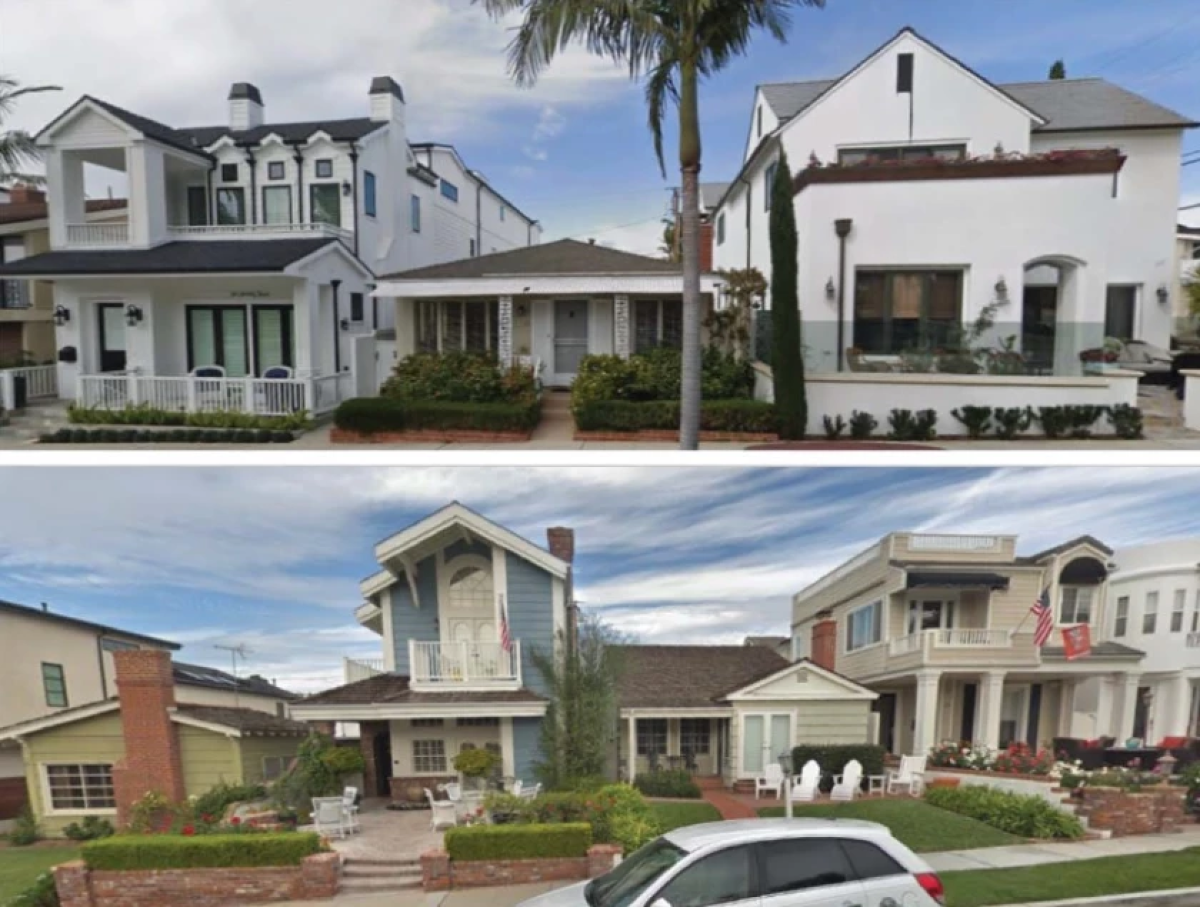Newport Beach approves Coastal Commission changes to cottage preservation ordinance

- Share via
The Newport Beach City Council this week approved minor changes issued by the California Coastal Commission on the city’s cottage preservation ordinance, which provides incentives to homeowners to preserve the vintage properties.
The ordinance initially came about in 2019 when residents raised concerns about the disappearance of the small, residential cottages throughout the city. Cottages are characterized by the city generally as smaller, residential dwellings that are representative of Newport Beach’s traditional development patterns.
They tend to be one-story, except for those with a small second-story above parking at the rear of the lots, and located in old Corona del Mar, on Balboa Island and on the Balboa Peninsula.
An incentive included in the ordinance was the allowance of additions of up to 50% of existing floor area — up from the 10% allowed previously — with a maximum of 750 square feet. The program was designed to be voluntary, and property owners would still be allowed to demolish and build a new dwelling unit.
Additionally, property owners would be relieved from a requirement that would force them to bring the entire building up to current building code when the renovations hit a certain value level — more than 50% of a structure’s value on improvements.
“The intent is to allow for a modest addition to existing cottages,” said principal planner Jaime Murillo. “But in exchange for this incentive, the property owner would have to agree to ... restrictions that would maintain the building envelope that’s representative of your typical cottage.”
Those restrictions include keeping the maximum height of a structure to 16 feet in the front half of the lot. A second-story addition, allowed in the rear half of the lot, would be allowed to reach heights of up to 24 feet. No third floor areas or decks would be allowed. It would also be restricted to the deed.
The city announced Friday that Finnigan would be succeeding former Assistant City Manager Carol Jacobs.
Murillo, answering a question posed by Mayor Kevin Muldoon, said the deed restriction runs with the land itself, but that if a property owner chose to redevelop the lot, the city would rescind the restriction.
“The intent is if they want to take advantage of this incentive and allow for this addition, they have to agree to maintain this building form,” said Murillo. “But if they want to completely demolish and build a three-story home, they can choose to do so as well and we would remove the restriction.”
The City Council reviewed the ordinance and approved it initially in February 2020 but required approval from the Coastal Commission to apply it to cottages in the coastal zone.
The California Coastal Commission reviewed the ordinance in November last year but recommended the addition of several criteria for cottages to qualify for the incentives provided.
The unit size, the commission said, should be limited to a 1,500-square-foot maximum. The panel also noted incentives cannot prevail over any coastal protection policies or regulations and struck a city-proposed restriction that would have prohibited short-term lodging. Instead, commissioners suggested such lodging be allowed for a maximum of six occupants in the coastal zone only.
Murillo confirmed that, outside of the coastal zone, the city would still be able to maintain a restriction on short-term rentals.
Resident Laura Curran said the city should use its general short-term lodging policies as opposed to making an exception for cottages in the coastal zone but not for those outside of it. She also asked questions about the height limit — such as in the case of basements, which she said could be considered part of a two-story house — and restrictions guarding the front half of a cottage lot.
“I think ... you have a start on a plan, but I think we need to be open to the idea as this goes forward that as people apply that they have opportunity to propose something that builds out more than 50% the front of their house or lets them build a second story in certain cases where it’s not feasible to build in the back house,” said Curran.
Councilwoman Joy Brenner recused herself from the otherwise unanimous vote to approve the ordinance due to real estate interests.
Before becoming law the ordinance will be given a second reading at the City Council’s Jan. 25 meeting.
All the latest on Orange County from Orange County.
Get our free TimesOC newsletter.
You may occasionally receive promotional content from the Daily Pilot.





